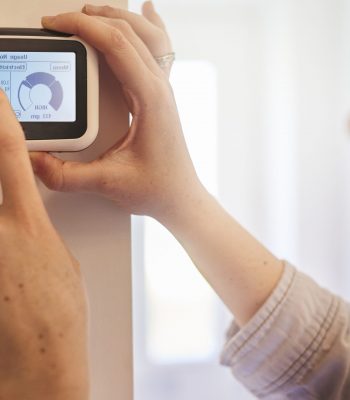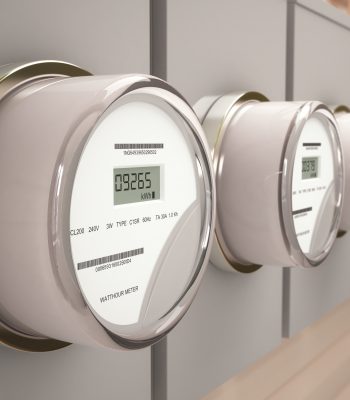Description
The EBRD regions have a legacy of subsidised electricity and heat tariffs, along with normative billing rather than consumption-based billing. Normative billing occurs when, for example, monthly heating bills are based on the size of an apartment rather than on the actual heating consumed. However, correct price signals are necessary to promote prudent energy consumption and to incentivise energy efficiency investments. Today, tariff reforms remain a key challenge in many of the economies where the EBRD invests.
Good price signals depend on decent price-setting as well as good metering and billing mechanisms. Price-setting should reflect all costs, including environmental or climate-related costs. In addition to an adequate price level, it is also important that tariffs are set and adjusted in a predictable manner so that related investments can be undertaken without unnecessary risks of price volatility. To ensure this, the heat and electricity tariffs should be devised using a formula-based methodology and approved by an independent and capable regulator. To this end, the city authorities could help to set up or improve both the relevant methodology and the regulatory authorities. While electricity tariffs often fall outside municipal control, district heating (DH) and cooling tariffs are normally under the control or influence of local authorities.
Effective metering, billing and bill collection are also important to ensure correct price signals for electricity and heat consumption. Electricity metering and billing can have different degrees of sophistication – from plain mechanical readers to digital meters with real-time information on consumption and expenditures combined with differentiated tariffs for the day- and night-time consumption. More sophisticated metering and tariff structures can help promote a more prudent and cost-efficient consumption pattern, for example, running washing machines at night when electricity tariffs and grid capacity are more favourable. An even higher degree of ‘smartness’ includes metering and tariff arrangements that record reversed energy flow back to the grid. This form of smart metering can help promote the installation of renewable energy solutions – such as solar panels on buildings, as surplus energy production can then be sold back to the grid and further reduce the energy bill for the relevant buildings.
District heating metering generally lags behind electricity metering in accuracy and sophistication and normative billing is widespread. The technical challenges associated with DH metering are often largely due to old infrastructure that was not intended for individual metering. However, as new generations of heat allocators can be used as an alternative to heat meters, the opportunity to achieve accurate consumption-based billing of DH use is there. This will have significant impacts on consumption patterns and incentives to invest in the energy-efficient refurbishment of buildings.
Utility sector pricing reforms are needed to accompany the installation of apartment-level metering technologies. Kazakhstan is currently undergoing a smart heat-meter programme,[1] while a number of cities in Europe, such as Tartu, Estonia, and Copenhagen, Denmark, have installed these systems.
Utility companies – often important local employers – should exercise equal opportunity, anti-sexual harassment and non-discrimination policies. Companies need to consider hiring more women for customer relations, technical and even managerial positions, as gender-informed customer engagement and decision making also benefit the company’s performance. The district heating company in Aktau, Kazakhstan, learned that most female customers were not happy to open their doors to male employees visiting their homes to read meters. Thus, the company adopted a gender-sensitive employment strategy and hired women in these positions, which significantly contributes to operational efficiency and a high level of customer service.

Resource implications and key requirements
There are significant investment costs linked to the installation and upgrading of meters. For example, fourth-generation apartment-level heat-cost allocators for metering with remote reading and control, needed to introduce consumption-based heat billing, cost around €40 per allocator. One allocator is needed for each radiator in an apartment.[2] The costs of a smart metering roll-out are largely borne by energy suppliers, predominantly through funding the installation and purchase cost of meters (about €110 per household) and through funding the national smart metering communications infrastructure. Installation of meters in private properties also requires access to the properties. Here, cooperation with the property owners may require significant resources for the relevant implementation agencies. Introducing smart meters that enable bidirectional energy flows would further require the development of a smart grid and necessary capacity within energy distribution companies that are able to implement such net-metering arrangements. To encourage the buy-in and cooperation of private companies and property owners, some subsidy schemes may be needed, which again represents additional resource requirements for the city or the authorities promoting this policy.
A cost-benefit analysis by the UK government found that costs related to smart meters are expected to be around £670 million per year, whereas the benefits are calculated at £1.9 billion per year on average. Overall, the UK government estimates that from 2028, the programme will be delivering net benefits of around £1.2 billion per year.[3]

Implementation obstacles and solutions
Increased electricity and heat tariffs often imply affordability constraints for low-income households. It has been argued that this problem can be addressed most effectively through targeted support for the poor rather than by providing universal energy or heat subsidies to the population. Installation of meters in private properties also requires access to the properties and necessary cooperation with the property owners. To support this process, a combination of information campaigns, stakeholder consultation and price incentives to change metering arrangements has proven effective.
Another constraint is that effective metering technologies may not be accessible to every household or individual customer. Local governments and supply chain companies should develop training and sensitisation programmes to understand and meet different social groups’ demands. For example, companies can design and install accessible smart metering devices for people with visual impairment or dexterity issues, which could have features like text-to-voice, larger touchable buttons and easy-to-use controls.

References
[1] EBRD (2017), “EBRD to fund installation of heat meters in Kazakhstan”, S. Pyrkalo, EBRD website, February 2017.
[2] EBRD (2018b), “Making district heating happen: empowering users through fair metering”, policy paper.
[3]UK Department for Business, Energy and Industrial Strategy (2019), “Smart Meter Roll-Out. Cost-Benefit Analysis (2019)”, September 2019.













